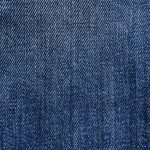You’ll find Bangladesh leading the jute fabric industry by blending rich heritage with modern technology, boosting both economy and sustainability. The sector supports millions through farming and manufacturing, while innovations in machinery and eco-friendly practices keep it competitive globally. Government incentives further strengthen export growth focused on value-added products. If you want to understand how this time-tested industry balances tradition, innovation, and green solutions for future expansion, there’s much more to explore.
Table of Contents
Key Takeaways
- Bangladesh’s jute industry is a major employer, supporting millions, especially in rural areas and among women workers.
- The sector has transitioned from traditional handloom to mechanized mills, boosting production and export capacity.
- Technological advancements include automated fiber extraction, eco-friendly retting, and solar-powered machinery, enhancing sustainability.
- Jute fabric manufacturing benefits from government incentives, tariff protections, and marketing support to compete globally.
- Expanding exports and innovation in value-added jute products drive the industry’s positive future outlook.
Historical Overview of Jute Fabric Manufacturing in Bangladesh
For centuries, jute fabric manufacturing has shaped Bangladesh’s economy and culture. You’d find that the roots of jute production trace back to the Mughal era when artisans first mastered weaving this versatile fiber.
As you explore the 19th century, you’ll see the British colonial period boosting jute’s prominence, turning it into a global commodity. You’ll discover how traditional handloom methods gradually gave way to mechanized mills, expanding production and skills.
The 19th century saw British rule transform jute from handwoven craft to a global industrial staple.
When Bangladesh emerged in 1971, jute remained a key industry, symbolizing resilience and heritage. You’ll also notice how jute weaving isn’t just about economics—it’s deeply woven into local customs and daily life.
Understanding this history helps you appreciate why jute fabric manufacturing still holds such significance today.
Economic Impact of the Jute Industry
You’ll see that the jute industry plays a vital role in creating jobs across Bangladesh, especially in rural areas.
It also brings in significant export revenue that supports the national economy.
Understanding these impacts helps you appreciate how jute manufacturing drives rural development and economic growth.
Employment Generation
Although the jute industry faces challenges, it continues to provide millions of jobs across Bangladesh, supporting both rural and urban communities. You’ll find employment opportunities in farming, processing, and manufacturing, which help stabilize local economies and reduce poverty. The industry especially benefits smallholder farmers and women workers, empowering them financially.
Here’s a snapshot of employment distribution:
| Sector | Estimated Jobs (millions) | Key Roles |
|---|---|---|
| Farming | 3.5 | Cultivation, harvesting |
| Processing | 1.2 | Retting, fiber extraction |
| Manufacturing | 0.8 | Weaving, packaging, quality |
Export Revenue Contribution
Since jute products hold a significant place in global markets, Bangladesh earns substantial export revenue from this natural fiber industry.
You’ll find that jute fibers, yarns, and diversified products like bags and carpets are in high demand worldwide. This steady demand translates into a strong foreign currency inflow, boosting Bangladesh’s trade balance.
When you consider the government’s efforts to promote jute exports through policy support and incentives, it’s clear the sector plays an essential role in the national economy.
Additionally, as global consumers shift toward eco-friendly materials, your investment in jute manufacturing can capitalize on new market opportunities.
Rural Economic Development
When jute farming thrives, rural communities in Bangladesh reap significant economic benefits. You see, the jute industry isn’t just about fabric; it’s a lifeline for many families. It creates jobs, boosts incomes, and supports local businesses.
By investing in jute cultivation and manufacturing, you help uplift entire villages. Here’s how the jute industry impacts rural development:
- Provides steady employment for farmers and laborers
- Encourages small-scale entrepreneurship in jute processing
- Improves infrastructure due to increased economic activity
- Enhances access to education and healthcare through community growth
Key Players in the Bangladesh Jute Sector
You’ll want to know who the major jute manufacturers are in Bangladesh and which companies lead in exports.
These key players shape the industry’s growth and global reach.
Let’s take a closer look at their roles and contributions.
Major Jute Manufacturers
Several leading companies dominate the jute manufacturing industry in Bangladesh, shaping the sector’s growth and global reputation.
When you explore this field, you’ll notice these manufacturers focus on quality, innovation, and sustainability, pushing the industry forward. They’ve built strong networks and invested in modern technologies, ensuring Bangladesh remains a top jute producer worldwide.
You’ll find these major players:
- Bangladesh Jute Mills Corporation (BJMC): The government-owned backbone of the industry.
- Adamjee Jute Mills: One of the oldest and largest jute producers.
- Ahmed Jute Mills Limited: Known for consistent quality and export capabilities.
- Envoy Textiles Ltd: A private sector leader with advanced manufacturing techniques.
Leading Export Companies
Export leaders play a crucial role in Bangladesh’s jute sector by connecting local manufacturers to global markets. When you look at the key players, companies like Bangladesh Jute Mills Corporation, Envoy Textiles, and Confidence Group stand out. These firms guarantee quality products reach buyers worldwide, boosting the country’s export economy.
Here’s a quick overview of leading export companies:
| Company Name | Key Products | Export Markets |
|---|---|---|
| Bangladesh Jute Mills Corp. | Jute Bags, Fabrics | Europe, Asia |
| Envoy Textiles | Jute Yarn, Fabrics | USA, Middle East |
| Confidence Group | Jute Goods, Rugs | Australia, Europe |
Technological Advances in Jute Processing
Technological advances have transformed jute processing in Bangladesh, making the industry more efficient and sustainable. You’ll find that modern machinery now speeds up fiber extraction and reduces manual labor, boosting productivity.
Innovations like automated spinning and weaving machines have improved fabric quality and consistency, helping manufacturers meet global standards. Additionally, advanced retting techniques have shortened processing times while preserving fiber strength.
Here’s what you can expect from these technological improvements:
- Automated fiber extraction reduces waste and enhances yield.
- Computerized spinning guarantees uniform thread quality.
- Modern weaving looms increase fabric strength and design precision.
- Improved retting methods cut processing time and maintain fiber durability.
With these advances, you’ll see Bangladesh’s jute industry becoming more competitive worldwide.
Environmental Benefits of Jute Fabric
While many fabrics harm the environment, jute stands out as an eco-friendly choice you’ll appreciate. It’s biodegradable, requires minimal pesticides, and absorbs large amounts of CO2, making it a sustainable option. Plus, jute cultivation enriches the soil and supports biodiversity. When you choose jute, you reduce plastic waste and lower your carbon footprint.
| Environmental Benefit | Impact |
|---|---|
| Biodegradability | Breaks down naturally, reducing waste |
| Low pesticide use | Protects ecosystems and water quality |
| Carbon sequestration | Absorbs CO2, combating climate change |
| Soil enrichment | Improves soil fertility for future crops |
| Plastic alternative | Reduces reliance on non-biodegradable plastics |
Challenges Facing the Jute Industry
Although jute offers many environmental advantages, the industry faces several significant challenges that affect its growth and sustainability.
Jute’s eco-benefits are clear, but industry challenges hinder its growth and long-term sustainability.
You’ll find that outdated technology often limits production efficiency and quality. Additionally, fluctuating raw material prices make it tough to predict costs and plan ahead. The global market competition from synthetic fibers also pressures you to innovate continuously.
Finally, labor shortages and skill gaps can slow down manufacturing processes and reduce output.
- Outdated machinery reduces productivity
- Price volatility impacts budgeting
- Competition from synthetic alternatives
- Labor shortages hinder operations
To thrive, you need to address these hurdles by investing in technology, stabilizing supply chains, and enhancing workforce skills.
Without tackling these, growth remains constrained despite jute’s eco-friendly appeal.
Government Policies Supporting Jute Manufacturers
To overcome the challenges in jute manufacturing, the Bangladeshi government has stepped in with policies aimed at boosting the industry’s competitiveness and sustainability. You’ll find these policies address financial support, technological upgrades, and market protections to help you thrive.
| Policy Area | Key Features |
|---|---|
| Financial Incentives | Subsidies, low-interest loans for jute mills |
| Technology Support | Grants for machinery modernization |
| Marketing Assistance | Promotion campaigns domestically and abroad |
| Regulatory Measures | Tariff protections against synthetic alternatives |
Export Trends and Global Market Position
As global demand for eco-friendly materials rises, Bangladesh has strengthened its position as a leading exporter of jute products.
You’ll find the country consistently expanding its reach in international markets, focusing on quality and sustainability. Jute exports have surged, driven by growing awareness of environmental issues worldwide.
Bangladesh is expanding its global jute market presence with a focus on quality and eco-friendly practices.
Key export trends include:
- Diversification into value-added jute goods like bags and home décor
- Expanding markets in Europe, the US, and Asia
- Increasing government support to boost export volumes
- Strengthening branding as a reliable eco-friendly supplier
Innovations Driving Sustainability in Jute Production
Building on Bangladesh’s expanding role in global jute markets, the industry is embracing cutting-edge innovations to boost sustainability in production.
You’ll see advances like eco-friendly retting techniques that reduce water pollution and speed up fiber extraction. Plus, integrating solar-powered machinery cuts down on fossil fuel use, making manufacturing greener.
You can also find genetically improved jute varieties that require fewer pesticides and fertilizers, helping preserve soil health.
Waste management innovations turn jute residues into bioenergy or biodegradable products, minimizing environmental impact.
These changes not only protect the environment but also improve efficiency and product quality.
Future Outlook and Growth Opportunities for Jute Fabric Manufacturing
While the global demand for sustainable materials grows, Bangladesh’s jute fabric manufacturing stands at a pivotal point for expansion.
You can tap into new markets and technologies to boost production and improve product quality. Embracing eco-friendly innovations and diversifying applications will help you stay competitive.
Here are some key growth opportunities to focus on:
- Expanding exports to eco-conscious international markets
- Developing value-added jute products like composites and geotextiles
- Leveraging government incentives for green manufacturing
- Investing in modern machinery and skill development
Frequently Asked Questions
What Are the Common Uses of Jute Fabric in Everyday Products?
You’ll find jute fabric in bags, rugs, curtains, and upholstery. It’s great for eco-friendly packaging and home decor. You’ll also see it used in fashion accessories and agricultural products like sacks and mats.
How Is Jute Fabric Cared for and Maintained?
Think of jute fabric as a delicate garden—clean it gently with cold water, avoid harsh chemicals, and air dry it away from direct sunlight. You’ll keep it fresh and strong, preserving its natural charm.
Are There Any Health Benefits Associated With Using Jute Products?
Yes, you’ll find jute products eco-friendly and biodegradable, reducing chemical exposure. They’re breathable and natural, which can help prevent allergies and skin irritations, making them a healthier choice compared to synthetic materials.
How Does Jute Fabric Compare to Cotton in Texture and Durability?
You’ll find jute fabric has a charmingly rustic feel, coarser than cotton’s smooth touch. It’s sturdier, making it less delicate but incredibly durable. So, if you want long-lasting, jute’s a strong contender.
What Are the Primary Colors and Patterns Available in Jute Fabric?
You’ll find jute fabric primarily in natural beige or brown tones, but it’s also dyed into greens, reds, and yellows. Patterns often include stripes, checks, or simple geometric designs, enhancing its rustic charm.
- The Role of Nonwoven Geotextiles in Soil Stabilization - July 11, 2025
- Meltblown Nonwovens: The Heart of High-Filtration Masks - July 11, 2025
- A Beginner’s Guide to Nonwoven Fabric Types - July 11, 2025







